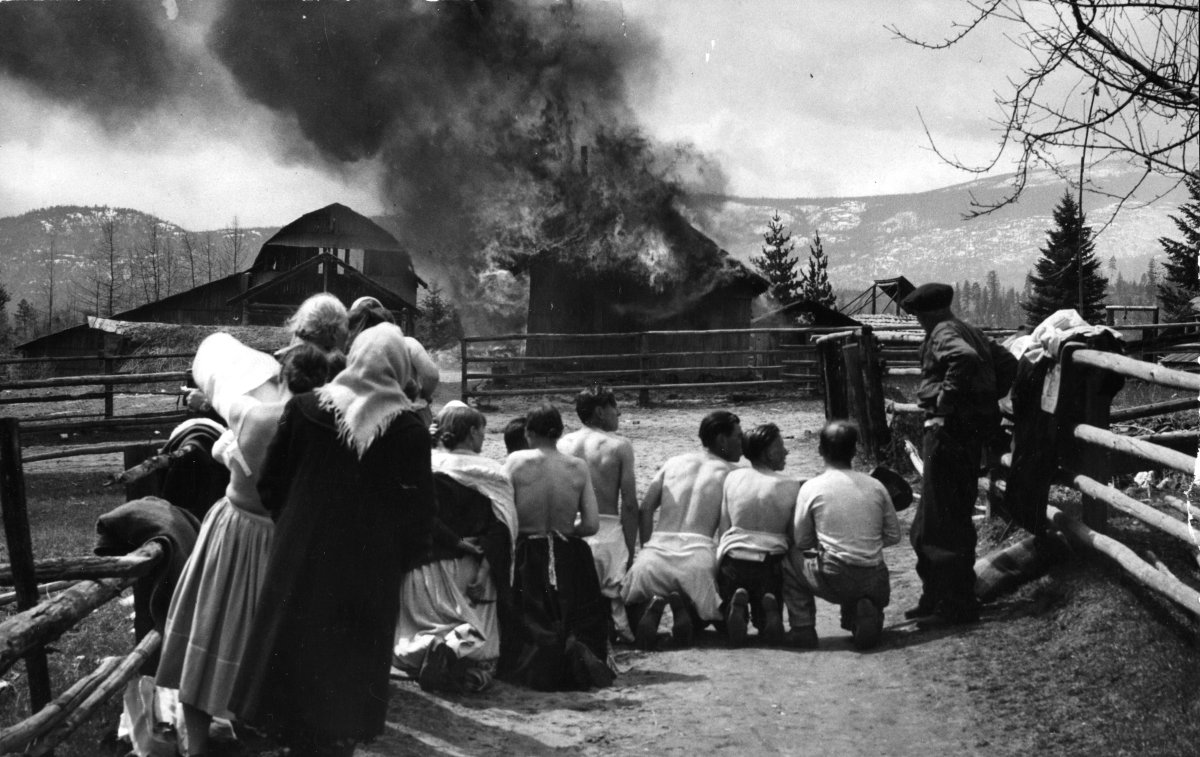TORONTO – More than half a century after hundreds of children were seized from their homes and forced into residential schools, the radical sect of Russian immigrants known as the “Sons of Freedom Doukhobors” are still fighting for an apology from the British Columbia government.

In the 1950s, nudity and arson were the hallmarks of the Sons of Freedom but many say it was their refusal to send their children to public schools that brought the government into their communal villages in the Kootenay-Boundary in British Columbia. In 1953, the populist, conservative Social Credit government arrested hundreds of adults and seized children from the Sons of Freedom, sending them to the New Denver dormitory–the same one used to house Japanese-Canadians during the Second World War.
Children were held in prison-like conditions for the next six years, beaten and some revealed for the first time, in interviews with 16×9, that they suffered sexual abuse at the hands of New Denver staff.
In early February 2012, a group calling itself the New Denver Survivors Collective argued before the B.C. Human Rights Tribunal that the government must carry out recommendations put forward by a 1999 BC Ombudsman report, which called for an unconditional, clear and public apology for the 1953 raids.
To this day, the group has yet to receive an apology.
- Train goes up in flames while rolling through London, Ont. Here’s what we know
- Wrong remains sent to ‘exhausted’ Canadian family after death on Cuba vacation
- Liberals having ‘very good’ budget talks with NDP, says Freeland
- Peel police chief met Sri Lankan officer a court says ‘participated’ in torture
Origin of Doukhobors
The Doukhobors, or “spirit wrestlers” trace their roots to southern Russia in the mid-1600s, when a group of believers split from the Russian Orthodox Church on moral and liturgical grounds. The Doukhobors believed that God did not dwell in the church, but in each human being. While the term “Doukhobors” was meant to be derogatory, the group embraced it, saying, “We are spirit wrestlers because we wrestle with and for the Spirit of God against those things that are evil.”
Doukhobors’ religious philosophy is based on two biblical commandments: “Recognize and love God with all thy heart, mind, and soul,” and “Love thy neighbour as thyself.” Their position has always been that war is not compatible with Christianity, and to kill another human being is to kill the Spirit of God within that person.
Doukhobors in Canada
A pivotal moment in the movement’s history occurred in 1895, when thousands of Doukhobors burned their firearms, dramatically rejecting enforced military service. That protest is still marked on June 29 each year as Peter’s Day, in honour of spiritual leader Peter Verigin.
In 1899, with the help of sympathetic Quakers and noted Russian novelist Leo Tolstoy, an estimated 7,500 Doukhobors left for Canada, settling first in eastern Saskatchewan.
By 1908, the majority of that colony opted to pull up stakes and buy land in southern B.C. Towns like Castlegar and Grand Forks became the heartland for the Doukhobor people.
In 1915, a smaller colony of about 300 Doukhobors was established around Lundbreck, in southwestern Alberta. It acted as a midpoint between the grain fields of the Saskatchewan colonies and the large B.C. population and eventually included a large Doukhobor-run flour mill.
According to the University of Alberta, there are between 30,000 and 40,000 Doukhobor in Canada today.
For the full story watch 16×9 this Friday at 8 PM – AT/MT, 9 PM – CT, 10 PM – ET/PT.

Comments